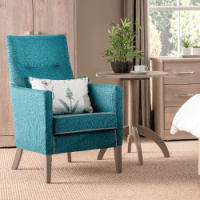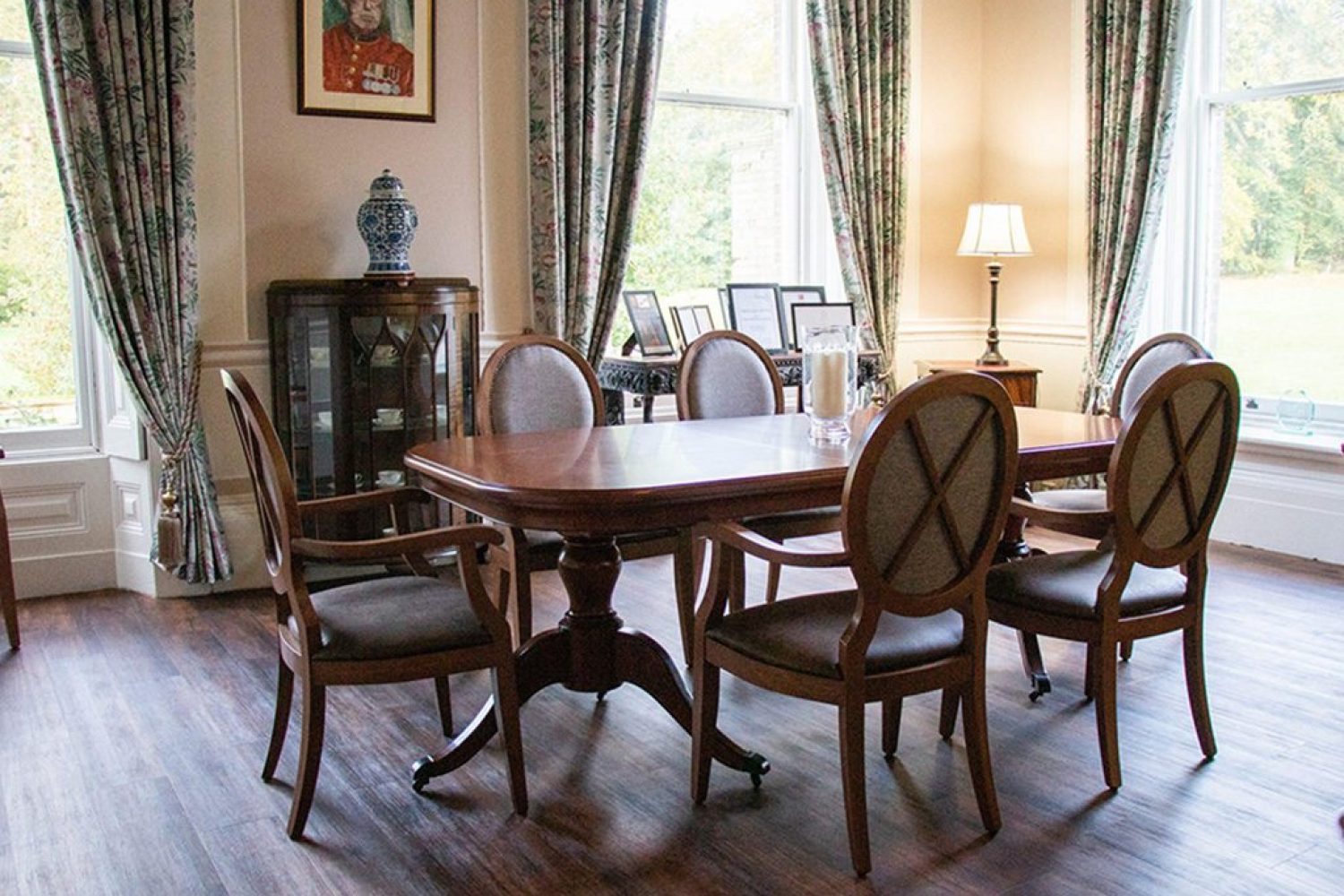- Article
- Jordan Cantley
Care Home Lounge Layout Purchasing new care home lounge furniture is about more than just the furniture itself. The activities that take place within the room, the amount of residents generally in the space
A premium collection of complete room packages designed from the ground up specifically for nursing and care homes.

A premium collection of complete room packages designed from the ground up specifically for nursing and care homes.


Mealtimes are an incredibly important part of daily routine, and none more so than in care homes and residential services where meal times present an opportunity for socialisation and a coming together of the care home family to take enjoyment from eating together. However, within care homes, dining rooms tend to be large open spaces that seldom resemble much similar to the smaller dining rooms we are used to in our own homes. Keeping familiarity and using elements of traditional dining rooms within care home dining rooms is important to subconsciously signal the function of the room and what activities will take place in it. This is especially important for residents who are living with dementia; for instance if a care home dining room clearly resembled an area that residents can recall from their own homes then they will know that this is the place where they eat their meals. Choosing suitable care home dining furniture is often subjective to personal preference, however there are some key considerations to take into account when selecting the dining tables for care homes to ensure that your care home dining room is suited to your users and the function that you want the room to perform. Read on to find out more!
Dining tables can come in all shape and sizes, but there are some elements to consider when you are looking at what shape to purchase:
The mobility of residents and whether they have any walking aids or wheelchairs will also need to be considered when selecting your table style. It’s also key to think about what type of dining environment your tables will be going into.
The layout of a dining space is just as important as the care home dining room furniture you’re going to put in it. At the same time as choosing your tables, you also need to consider how many residents and carers you need to be able to seat at any one time, and how this will work within the space you have.
Lastly, when you’ve selected your ideal care home dining tables, it is important to check that the finish and composition of the tabletop will be suitable for the demands of a care environment. Look for a table that has a moisture, chemical and heat resistant finish as these will be more resilient to any spillages and accidents, and the chemical resistance will mean that your tables are easily cleaned and disinfected.
We hope that this guide has helped you in making the decision on your ideal new dining tables and some helpful tips on how to provide a great dining experience for your residents. If you’d like any further assistance please contact our friendly expert team on 01603 664 900 or sales@furncare.co.uk.
| Cookie | Duration | Description |
|---|---|---|
| cookielawinfo-checkbox-analytics | 11 months | This cookie is set by GDPR Cookie Consent plugin. The cookie is used to store the user consent for the cookies in the category "Analytics". |
| cookielawinfo-checkbox-functional | 11 months | The cookie is set by GDPR cookie consent to record the user consent for the cookies in the category "Functional". |
| cookielawinfo-checkbox-necessary | 11 months | This cookie is set by GDPR Cookie Consent plugin. The cookies is used to store the user consent for the cookies in the category "Necessary". |
| cookielawinfo-checkbox-others | 11 months | This cookie is set by GDPR Cookie Consent plugin. The cookie is used to store the user consent for the cookies in the category "Other. |
| cookielawinfo-checkbox-performance | 11 months | This cookie is set by GDPR Cookie Consent plugin. The cookie is used to store the user consent for the cookies in the category "Performance". |
| viewed_cookie_policy | 11 months | The cookie is set by the GDPR Cookie Consent plugin and is used to store whether or not user has consented to the use of cookies. It does not store any personal data. |